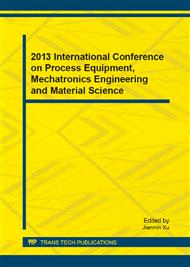p.200
p.205
p.211
p.216
p.222
p.227
p.231
p.236
p.242
The Fluid Field Analysis of Cyclone Desander
Abstract:
Cyclone desanding is the technology of separating the solid component from the slurry by centrifugal force, widely used in the oil and gas industry. This study is to design a type of cyclone desander as efficient desanding equipment, which can desanding by the liquid flow and need no any other auxiliary device. The cyclone desander can form forced swirl to separate the sand in the oil-water mixture. The separated sand would sink into the bottom of the well directly and the clogging would not occur. This type of cyclone desander can also reduce the wear and tear of the sand on the pump, extend the workover cycle and improve the efficiency of oil recovery. The numerical simulations for the flow in the cyclone desander are performed. The velocity distribution, the pressure distribution and the sand sinking conditions are acquired at different moments. From the results the in-depth analysis for the working conditions of the cyclone desander are performed to prove the .efficiency of the cyclone desander with simple structure, low energy consumption and high efficient desanding.
Info:
Periodical:
Pages:
222-226
Citation:
Online since:
July 2013
Keywords:
Price:
Сopyright:
© 2013 Trans Tech Publications Ltd. All Rights Reserved
Share:
Citation:


